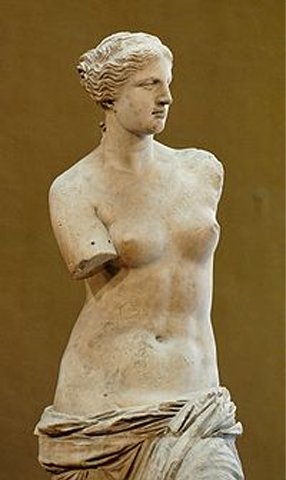By Andrew Graham-Dixon and Mark Lawson
HISTORIANS of classical antiquity have been stunned by what leading scholars are already calling "the archaeological find of the century" — the discovery, by a Greek peasant on the island of Melos, of the missing arms of arguably the world's most famous statue — the Venus de Milo. ' Discovered in February this year — when the peasant's ploughshare hit an obstruction in a field — the find has only now, after exhaustive forensic testing in France and Greece, been authenticated. The marble arms have been dated to the 2nd century BC. One of the hands holds an apple (a punning reference to Melos, which means "apple" in classical Greek). Early yesterday morning, almost exactly 167 years since the Venus was excavated on Melos, the arms were driven, under police escort, to the Louvre in Paris where the statue is on permanent display. In a private ceremony, attended by a leading classical scholar from each country and a single representative of the French and Greek governments, the slightly crumbling arms — missing two fingers on the right limb — were lifted slowly into place. It is said that applause rang through the august halls. A source at the Louvre said yesterday: "It was magnificent. They are a perfect fit."
Scholars have long thought that the amputated state of the Venus has hindered a full assessment of the work, which the critic Geoffrey Grigson described as "this rather chill giantess." But, according to an informed source, "the arms make all the difference". Whereas the comparable Venus de Medici holds one arm across her breasts and one across her pudenda, the Venus de Milo has her right arm by her side and the left extended — "perhaps waving, even beckoning," says one of the scholars present...


